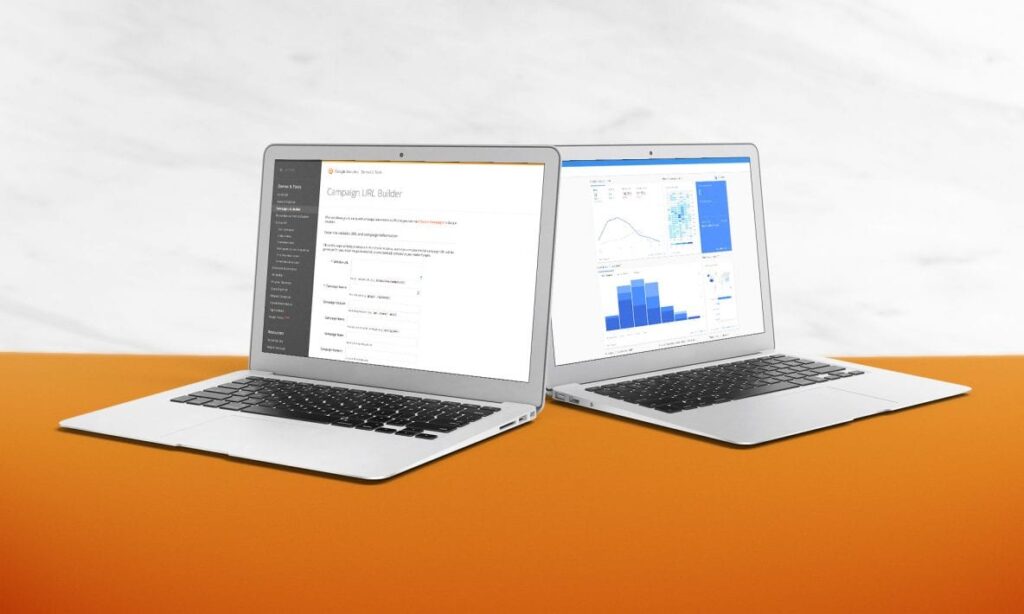“Are you ready to start your journey to the far-away land of marketing metrics?”
As a classically-trained graphic designer, that’s exactly what measuring marketing efforts felt like; a beautiful, distant, nearly unreachable place where marketers work smarter and increase profits. After some trial and error and researching of methods, I found that marketing metrics are not only attainable, but also absolutely necessary.
Have you ever copied a website address from your browser that was nearly three lines long? This is one of the many ways marketers are monitoring the effectiveness of their marketing efforts. By adding UTMs to the end of a URL, you can utilize the Custom Campaigns feature in Google Analytics and start to gain insight into the performance of your promotional activities by tracking where you’re promoting your content and what content your audience is clicking
Below, I’ll share some tips to help you get started with Google Analytics Custom Campaigns URL Builder by explaining the terminology used in the tool. Before we get started, be sure to download our free Google Analytics Custom Campaign Link Tracker. This resource will help you keep your campaigns organized and consistent.
GOOGLE ANALYTICS CUSTOM CAMPAIGN UTMS
There are five parameters (UTMs) that you can add to your URLs:
1. Campaign Source (utm_source) – The Referring Site
This is the specific location your website traffic is coming from, such as Google, a blog, a newsletter or an online directory. Tracking the referral sites for your website traffic will provide major insight into how your target audience finds you.
Common sources include:
- Websites
- Social Networks
- Email segments
- Weekly newsletters
- YouTube
2. Campaign Medium (utm_medium) – Link Delivery Method
How did the link appear to the user? The medium describes what the user clicked before arriving at your site or the object that link was attached to.
Some of the most common mediums include:
- Pay-per-click ads
- Banner ads
- Social posts
- Sponsorship opportunities
- Blog CTA
3. Campaign Term (utm_term) – Paid Search Keywords
Are you using Google AdWords to pay for keywords? If so, this field is where you would identify the specific keywords that relate to this campaign. Keep in mind, the campaign term category is not used for social media marketing or organic keywords, only paid search ads. Because of this, you will notice this is not a required field in Google’s URL Builder.
4. Campaign Content (utm_content) – Link Format and A/B Testing
This category is also optional, but is an excellent way to differentiate between similar content and/or different links within the same advertisement or page of content.
Use this parameter to compare user responses to:
- Messaging
- Color
- Imagery
- Embedded link vs. button
- Time of day
For example, if you are testing out two separate types of ad copy and you’d like to see which ad gets a better response from your target audience, you can use the same link, but learn which ad is performing better by adding a utm_content tag with distinct titles. Be sure to be descriptive so you can easily remember the email or ad you’re referencing. Additionally, differentiating between when a user clicked a button or an embedded link can help optimize your design for increased conversions.
5. Campaign Name (utm_campaign) – Naming Convention
Campaign name can be any descriptor that will help you easily recognize and track your custom URL. Use whatever name appeals to you most, and helps you remember what campaign you are tracking. The campaign name is also a great opportunity to incorporate timeframes.
Campaign Name is the default display parameter in Google Analytics, so be sure to create a consistent and descriptive name convention, such as “Source/Platform_Month_Year.”

Acquisition > Campaigns > All Campaigns Report sorted by Campaign Name
GOOGLE CUSTOM CAMPAIGN URL BUILDER
Now that you know what UTMs are available, how do you use them? Google has a tool to ensure your links are structured correctly. You can access it here. Below is a picture of what Google’s URL Builder looks like.

- Fill in the values
- Click submit
- Copy the generated link
- Optional: use our free resource to keep of track of the campaigns that you’ve created
Getting started with Google Analytics custom campaigns is fairly simple, and we hope you’re feeling empowered to begin your marketing metrics journey. Need help developing new content strategies, analyzing campaigns or designing lead-generating advertisements? Contact us today, and let’s take the first step toward your targeted victory.


